Komitea: ISO/TC 46/SC 9
(Identification and description)
Alkuperä: ISO
Määräpäivä: 2025-08-10
This document offers guidelines for the content, organization and presentation of indexes. This document applies to indexes to books (including works of fiction), periodicals, reports, patent documents, and other written or printed documents, and to non-print materials, such as electronic documents, internet content, electronic books (e-books), films, sound recordings, video recordings, graphic materials, maps, and three-dimensional objects. This document is concerned with basic indexing principles and practice rather than with the detailed procedures of indexing that vary according to the type of matter indexed and the users for whom the index is intended. Therefore, the examples given, including punctuation, are illustrative and not prescriptive. This document covers the examination of material and selection of subjects for indexing, as well as the choice, form and arrangement of headings and subheadings used in index entries. (For the compilation of a monolingual thesaurus that may assist in the selection of index terms, see ISO 25964-1:2011: Information and documentation — Thesauri and interoperability with other vocabularies — Part 1: Thesauri for information retrieval.) Although this document does not give any guidance on computerized index generation as such, it is relevant to the preparation of all types of index, regardless of whether they are produced manually or by computer-assisted methods, and whether compiled by one indexer or by a team of indexers. It does not cover the mechanized extraction of text words to generate indexes, e.g., chain indexing, citation indexing or the techniques of post-coordinate indexing, although its recommendations may be relevant to any of these systems. It does not make recommendations for the compilation of catalogues for libraries or museums.
